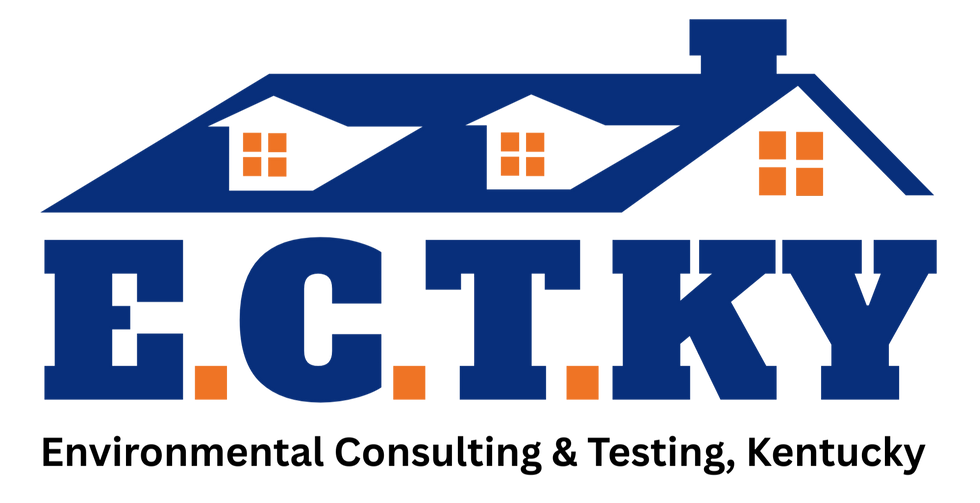Understanding the Hidden Dangers of Mold
- ECTKY

- May 21
- 4 min read
Updated: May 23
Mold often sneaks into our homes and lives, quietly causing significant issues. It is more than just an unsightly nuisance; mold can pose serious health risks and threaten the integrity of your property. In fact, recent studies indicate that over 70% of homes have some level of mold growth, particularly in moisture-prone areas like bathrooms and basements. Ignoring mold can lead to costly repairs and health complications.
This post will explore the various types of mold, their health risks, and the importance of mold testing. Recognizing these aspects is crucial for maintaining a healthy living environment.
What is Mold?
Mold is a type of fungus that can grow indoors and outdoors. It thrives in warm, damp, and humid environments, making spaces like bathrooms, basements, and kitchens prime spots for growth. Mold reproduces by releasing spores into the air, which can settle and grow if they land on a moist surface.
These tiny spores illustrate why it is vital to stay aware and proactive, especially in areas where moisture is common.
Health Risks Associated with Mold
Mold can lead to a range of health issues that many people might not realize. Here are common health risks related to mold exposure:
Allergies and Respiratory Issues
For many, mold exposure can trigger allergic reactions. Symptoms may include sneezing, nasal congestion, skin rashes, and itchy eyes. Research shows that about 20% of individuals are sensitive to mold, and exposure can worsen asthma or cause respiratory infections.
For those with pre-existing respiratory conditions or weakened immune systems, the risk increases, making it essential to act quickly if mold is found.
Toxic Mold Illness
Certain molds, like Stachybotrys chartarum (commonly known as black mold), produce mycotoxins that can harm human health. Prolonged exposure to black mold can lead to symptoms such as chronic fatigue, headaches, and memory issues. Classes of people who are most affected include children and the elderly, and studies show that living with black mold for an extended period increases the likelihood of serious health problems.

Long-term Effects
Short-term exposure might cause mild symptoms, but long-term contact can lead to severe health issues. Chronic sinusitis, pulmonary hemorrhage, and neurological symptoms like memory loss have been linked to extensive mold exposure. Understanding these potential risks reinforces the need for prompt remediation.
Types of Mold Found in Homes
Recognizing the different types of mold helps you understand their potential dangers. Here are common molds present in residential environments:
1. Aspergillus
Aspergillus is a mold found indoors and outdoors. It can cause allergic reactions and respiratory issues, especially in individuals with weakened immune systems. In fact, it accounts for about 20% of allergic reactions related to mold.
2. Cladosporium
Often found outdoors, Cladosporium can enter homes through open doors or windows. It can survive on various materials, including wood and textiles. Exposure may cause allergic reactions and respiratory concerns, leading to discomfort in sensitive individuals.
3. Penicillium
While known for its role in producing penicillin, Penicillium can also be hazardous in homes. It can cause symptoms like nasal congestion and cough, particularly in damp areas. Some studies indicate that exposure can lead to health problems in around 5% of the general population.
4. Stachybotrys Chartarum (Black Mold)
This infamous type of mold is frequently associated with water damage. Black mold can produce toxic mycotoxins that pose severe health risks, making swift remediation necessary for affected structures.
5. Alternaria
Often found indoors and outdoors, Alternaria is another allergenic mold. It can trigger asthma and respiratory problems, affecting a significant number of those with existing sensitivities.
The Structural Threats of Mold
Mold poses not only health risks but also threatens your home’s structural integrity. Here's how mold can endanger your property:
Wood Decay
Mold thrives on organic materials, especially wood. When it penetrates wood structures, it can lead to decay, risking the integrity of beams, floors, and furniture. Homeowners may face repair costs totaling thousands of dollars if mold damage is left unaddressed.
Damage to Drywall and Insulation
Mold can damage drywall and insulation, leading to increased energy costs. In severe cases, mold may require the removal of affected drywall, exposing additional structural systems that could also be at risk.
Compromised Building Materials
Mold affects various building materials, including carpet, tiles, and even concrete. Presence on these materials can require removal, leading to significant expenses for homeowners. It is estimated that the average cost for mold remediation can range from $1,500 to $30,000, depending on the severity of the infestation.
Importance of Mold Testing
Given the associated health risks and structural threats, it is crucial to test your home for mold if you suspect its presence. Here are key reasons why testing is essential:
Early Detection and Prevention
Mold can grow unnoticed for a long time. Testing allows early detection, giving homeowners the chance to tackle the problem before it escalates into a larger issue.
Assessing Health Risks
Mold testing identifies specific types of mold present, helping you understand potential health risks more clearly. This information empowers you to make informed decisions concerning remediation efforts.
Legal and Insurance Reasons
Mold issues can sometimes lead to disputes regarding property value or liability. Having a documented mold test can strengthen your position in such situations.
Safeguarding Your Health and Property
Mold is more than a simple inconvenience; it poses significant health and structural risks. From triggering allergies to severe health complications, the presence of mold should never be underestimated.
To protect your health and maintain your property, it is crucial to recognize different types of mold, understand their dangers, and take active measures like having your home tested for mold. By doing so, you can help ensure a safe and healthy living environment for yourself and your loved ones.
_edited.png)
_edited.png)



Comments